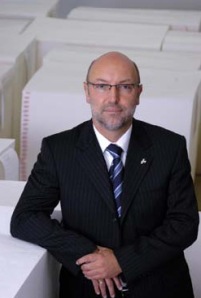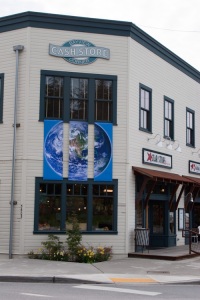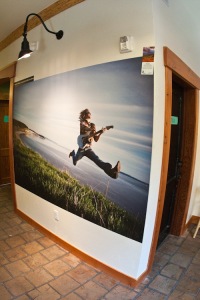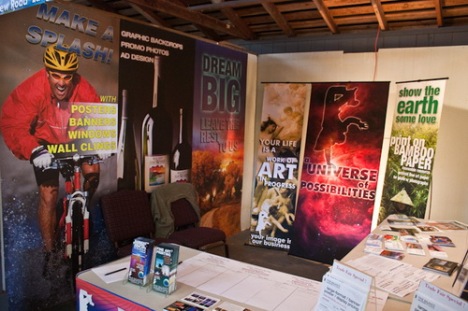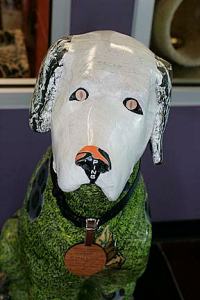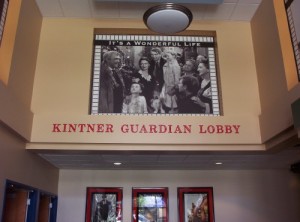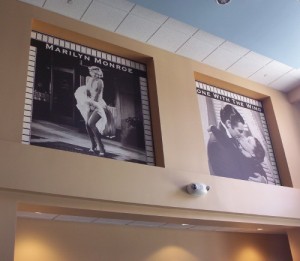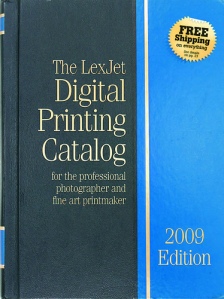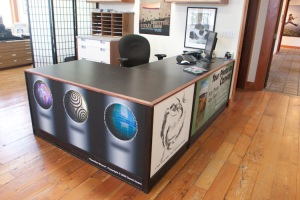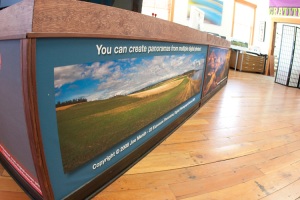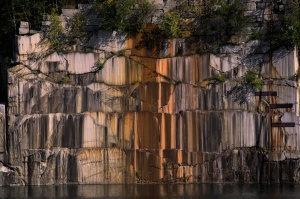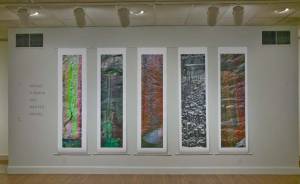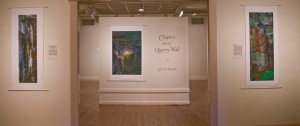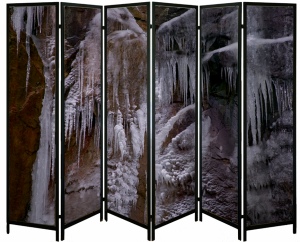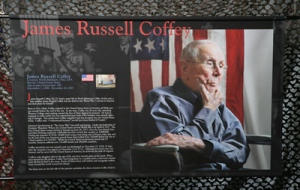LexJet is a proud reseller of Hahnemühle FineArt papers for inkjet photo and fine-art printing. So we are pleased to share this paper that Hahnemϋhle recently released describing the environmentally friendly production processes used in their papermaking.
Hahnemühle FineArt GmbH located in Dassel, Germany celebrated its 425th anniversary this year, making it one of the world’s oldest continuously trading paper mills. Throughout its history, Hahnemühle has been uniquely sensitive to environmental issues in an industry that is notorious for its exploitation of the natural world. Today Hahnemühle continues to lead with its innovative and infinitely sustainable production processes.
Joerg Adomat, Hahnemühle CEO, states, “The green rooster, the brother of the Hahnemühle red rooster, was created to show that we care about the environment. Caring means offering environmentally sound products, using green power production and sponsoring environmental initiatives. In doing so, last year we saved 3000 tons of carbon dioxide, introduced bamboo fiber and sugar cane waste- based papers and donated more than $100,000 to environmental initiatives.”
The main resources necessary for the production of paper are water, pulp and a tremendous amount of electrical energy. Hahnemühle has addressed all of these from a product quality and sustainability perspective:
Water: The Hahnemühle paper mill was originally established on the banks of the pure, spring-fed Ilme river near the town of Dassel in the beautiful Solling region of Lower Saxony, Germany. Today this region has been designated as a Nature Protection Area by a European Flora Fauna Habitat directive. As a resident of this beautiful area, Hahnemühle has adapted sustainable fresh water and contaminant-free sewage recycling programs that exceed even the most stringent FFH directives. Now, 425 years later, the water of the Ilme is still classified as “drinking quality”!
Pulp: The Hahnemühle product portfolio encompasses more than 500 different types of fine art, filter and technical papers, many of which are used in precision industrial and medical applications that require the highest degree of purity. Since many of these applications rule out the use of recycled paper fibers, the importance of using sustainable forest resources becomes paramount to our green initiatives.
 We use pulp from 20 different deciduous and conifer tree species worldwide and insist that our suppliers be certified for sustainable forestry practices that meet or exceed the equivalent of Forest Stewardship Council directives.
We use pulp from 20 different deciduous and conifer tree species worldwide and insist that our suppliers be certified for sustainable forestry practices that meet or exceed the equivalent of Forest Stewardship Council directives.
In addition to wood pulp, we also use six different types of cotton linters and rags made from the super-soft, non-aging fibers of totally renewable cotton plant seed vessels. In recent years Hahnemühle has developed two new “green” papers that have been added to the Digital FineArt Collection. The first was Bamboo 290gsm made from the fast growing fibers of the bamboo plant. The latest is Sugar Cane 300gsm, 75% of which is made from bagasse fibers, a by-product of sugar cane processing that would otherwise be burned. Cotton fibers gleaned from recycling our own paper waste make up the remaining 25%.
Electricity: The production of paper is an energy-intensive process; most of which is electrical. In January of 2009, Hahnemühle switched to one of Europe’s most eco-friendly electrical energy providers called LichtBlick. The power provided by this company is generated entirely from easily sustainable power sources. No atomic, coal, gas or petroleum fuels are used. This will allow us to eliminate approximately 3,000 tons of CO2 emissions annually, a figure that roughly equals our total paper production for a year!
Recycling: Whenever possible, we process our own paper trimming waste and return it directly into the production cycle. The excess waste trimmings that we cannot use are accumulated and forwarded to other fabricators, effectively eliminating virtually all our mill waste. Finally, all Hahnemühle packaging is made from fully recyclable materials. For more information visit www.green-rooster.com or www.hahnemuhledirect.com.
LexJet sells two Hahnemühle canvases (in sheets and rolls) and 22 different types of papers from the Hahnemühle Digital FineArt collection, including Hahnemühle’s environmentally friendly Bamboo 290 g and Sugar Cane 300 g papers.
Call a LexJet account specialist at 800-453-9538 for personalized assistance in selecting the right Hahnemuhle materials for your printmaking requirements and fast, economical delivery of your order.
Filed under: Fine Art Reproduction, Inkjet Media, Inkjet Photo Paper, Sustainable Solutions, Uncategorized | Tagged: digital fine art paper, fine art paper, Hahnemuhle, Hahnemuhle FineArt, Inkjet Photo Paper | Leave a comment »


